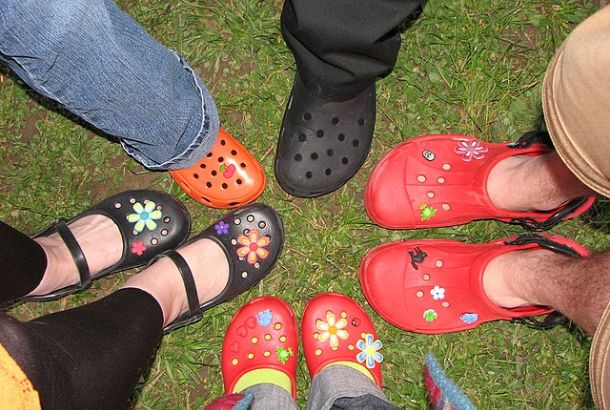Realistic steps you can take to make more sustainable fashion choices
By Bec Oakes

As a country, the UK is addicted to shopping. According to The Guardian, we buy more clothes per person than any other country in Europe, and five times what we used to buy in the 1980s. A possible explanation for this is the rise in fast fashion companies offering cheap, on-trend clothing made fast. We’re tempted on a daily basis by their latest collections and are drawn in by £1 bikinis, £5 pairs of jeans, and £10 pairs of shoes, all available with next day shipping.
But fashion this cheap comes at an environmental and social cost. The textile industry creates more CO2 emissions than aviation and shipping combined. It takes 7,500 litres of water to manufacture just one pair of jeans; equal to the amount one person drinks over the course of seven years. Research also shows that it costs an absolute minimum of $20 (although some estimate this cost to be up to $100) to make a pair of jeans without the risk of exploiting and endangering workers. So, that £5 pair of jeans? Certainly not socially sustainable. And, in just over 30 years, the fashion industry could be responsible for a quarter of the Earth’s entire carbon budget. So, we must act now to minimise our impact.
A talk on sustainable fashion, hosted by Dr. Claudia E Henninger and Dr. Marta Blazquez Cano from the University of Manchester’s Department of Materials, discussed how the fashion industry is taking steps towards becoming more sustainable. As a starting point, major high street retailers are offering a wider range of sustainable products, recognising where they’ve gone wrong and taking steps to change that.
New brands are also constantly emerging with sustainable practices at the heart of their businesses. An example of this is Antiform, who practices upcycling, reusing materials without degrading their quality and composition for their next use. Elsewhere, award-winning Zurich-based brand, Freitag, recycles through design, prolonging the life of materials by changing their state. And, brands such as Versalette use innovative design to create clothing that can be worn multiple ways, increasing the number of wears by consumers.
However, it’s not just the fashion industry that needs to be minimising their environmental impact. We as consumers need to do our bit too. Here’s how to effortlessly make more sustainable fashion choices…
Support brands doing their bit to become more sustainable. There’s a common misconception that sustainable fashion is more expensive, however, that simply isn’t true. A number of major high street retailers offer sustainable products and initiatives. Earlier this year, Primark released their first ever sustainable denim collection, using 100 percent sustainable cotton. H&M offers an initiative whereby customers can recycle old clothing for store credit. And, Zara are planning for their clothing to be made from 100 percent sustainable fabrics by 2025.
Buy in-store instead of online. If you can check the quality and fit of garments before you buy them, you’re less likely to buy stuff you don’t need. This also reduces unnnecessary plastic packaging (particularly if you shop with a reusable tote bag), as well as the environmental impact of shipping. Also, it has been found that, in some cases, it’s more expensive and complex to return clothing to a company’s warehouse system, so returned items often end up in landfills. This is particularly prevalent in fast fashion companies where they release new collections so frequently that, by the time you return an item to them, it is no longer desirable and they don’t see the point in re-categorising it and putting it back up for sale.
Avoid buying new clothing. Try thrifting at charity and vintage shops. In Manchester, we’re lucky to have a great second-hand shopping scene. While it’s not always guaranteed you’ll find what you want, the unknown can be part of the fun. You can also join forces with your community by arranging clothes swaps with friends or use clothes renting services, such as Rent the Runway, to keep your wardrobe fresh, while reducing your environmental impact.
Lastly, commit to wearing clothes for longer. If you buy a sustainable product but never wear it, are you really being sustainable? An IGTV clip by The Guardian reports that fast fashion items in the UK have an average lifespan of just five weeks. If we double that, we could cut emissions by 44%. Buy high-quality clothing that’s been made to last and try mending your clothes instead of binning them as soon as you notice a small issue. Most clothing problems, such as missing buttons or loose stitching, are easily mendable. Call a local seamstress or, better yet, learn how to sew and breathe new life into your clothing.
With environmental, economic and social sustainability sometimes working against each other, it can be argued that there is no such thing as sustainable fashion. However, we can and should all try to make a positive impact wherever we can.







